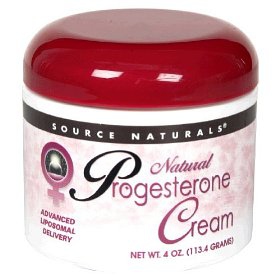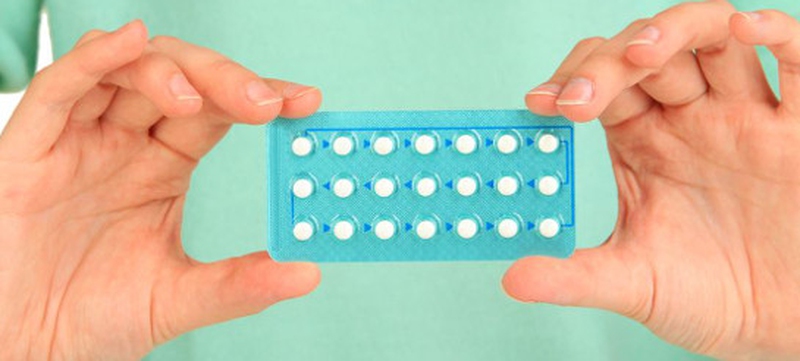During the menopause, the levels of certain female hormones, including progesterone, begin to decrease. The hormone imbalance triggers many of the known menopausal symptoms, such as hot flushes. Many women opt for hormone replacement therapy in pill form. However, for those that don’t want to take pills, and wish to avoid the long list of side effects from these therapies, there are other choices available. Among them, progesterone cream is considered a natural alternative which has fewer side effects to traditional menopause medications.
What Is Progesterone Cream?
To understand how progesterone cream works, you need to know about progesterone. This hormone is an important mediator of menstruation and ovulation. It's also crucial for preparing for and maintaining pregnancy, in addition to simulating the sex drive. About two weeks after the menstrual cycle has begun, progesterone is released from the ovaries, and causes the secretion of proteins responsible for the buildup of the uterine lining so that it is prepared for pregnancy.
Natural progesterone creams are most frequently synthesized from a Mexican yam extract. This extract is then supposedly converted into the progesterone molecule. Thus, progesterone creams allow the absorption of progesterone hormone through the skin. It's been reported that in one ounce of a good progesterone cream, there are 400 mg of progesterone. However, this is controversial. Skeptics say that creams made from Mexican yam do not have any progesterone in them, thus do not have the same effects of other progesterone medication.
What Are the Benefits of Progesterone Cream?
When the female hormones are imbalanced, with the levels of estrogen much higher than those of progesterone, progesterone cream may help. Balancing estrogen and progesterone is believed to decrease the risk of breast and endometrial cancer, increase the sex drive, improve bone health, fight depression, and control blood sugar levels. It may also ease the symptoms of the menopause, premenstrual tension and endometriosis.
Some people say that you will only see the benefits of progesterone cream if you adopt a healthy lifestyle, with a balanced diet, reduced stress and regular sleep. In addition, before using progesterone cream, you may need to get your adrenal glands fully checked, as they can produce progesterone.
It’s important to remember that these progesterone cream benefits have not been properly evaluated in long-term trials, unlike other hormone replacement therapies, such as progesterone pills.
Do Progesterone Creams Work Well and Are They Better Than Progesterone Pills?
The manufacturers and suppliers will highlight progesterone cream benefits, but research studies have not supported these claims. For example, one trial showed that the cream was poorly absorbed through the skin, so it couldn’t replace the progesterone made in the body. Therefore, it was not effective at preventing endometrial cancer. Another study made the opposite claim, stating that progesterone cream allows too much progesterone into the body. This may adversely affect the adrenal glands.
When considering whether progesterone cream is better than progesterone pills, it is important to remember that one of the major reasons for making the cream in the first place was to develop an alternative option for traditional hormone replacement therapy. This is because the drugs caused unacceptable side effects and interfered with other medicines. There is a chance that progesterone cream will give you the health benefits of progesterone pills without any side effects, but there is insufficient scientific evidence to back this up.
Before taking progesterone cream, as with any unstudied supplement, speak to your doctor. Pregnant and breastfeeding women should never use progesterone cream.
Suggestions When Using Progesterone Cream
Apply the cream where your capillaries are packed together and near to the skin’s surface. Good areas include the neck, face, forearms, upper chest, palms of the hands, and soles of the feet. However, applying the cream to fatty areas, such as the thighs, stomach and buttocks, may inhibit absorption. This is because the progesterone becomes absorbed into the fatty tissue, instead of circulating through the bloodstream to be used throughout the body.
Put the cream on twice a day: in the morning and before you go to bed. Some people say that the cream improves their quality of sleep. Dividing the progesterone dose this way helps to ensure a constant 8-12 delivery of the drug, so optimum levels of progesterone are maintained.
If you’re using progesterone after long-term progesterone deficiency, this can stimulate estrogen receptors, so you may experience heightened estrogen effects for a while. However, this is a good sign – it shows that your body is responding to the progesterone cream. As the levels of progesterone get higher, the estrogen effects should plateau and then disappear.
Those who have or have previously suffered from particular health conditions should not use progesterone cream. These conditions include hepatitis, severe active liver disease, gestational pemphigoid (pregnancy dermatosis), gestational jaundice, rotor syndrome, Dubin-Johnson syndrome, and abnormal bleeding from the vagina.





View All Comments /Add Comment